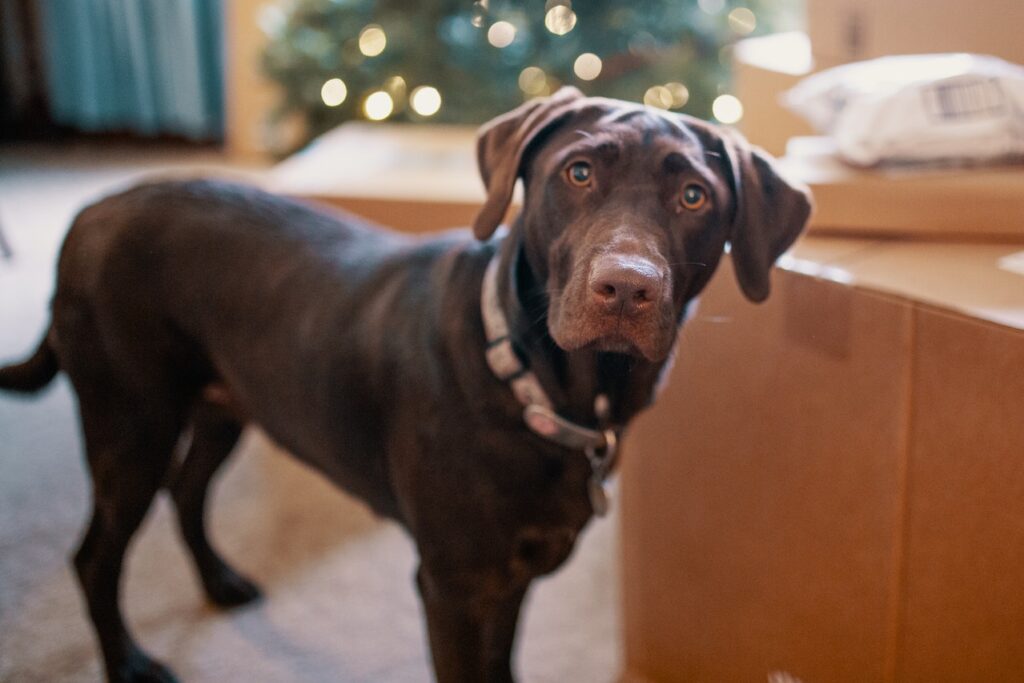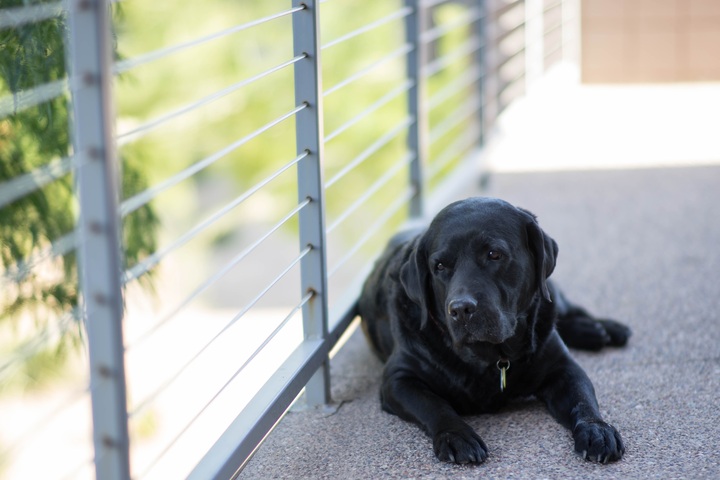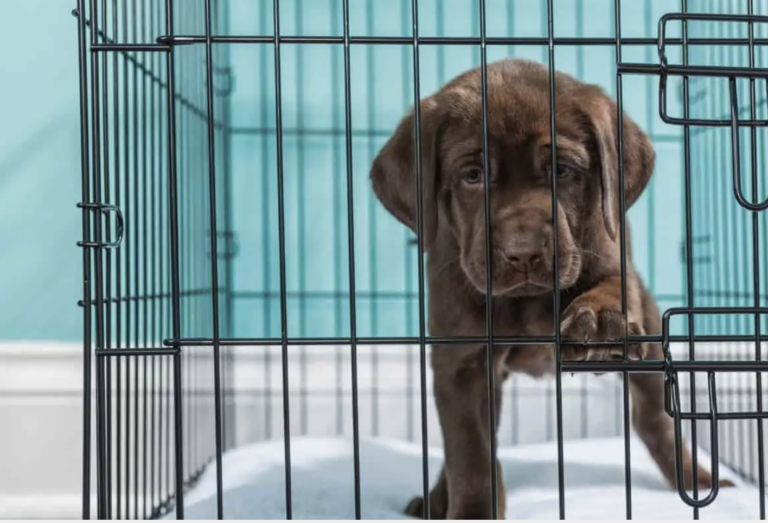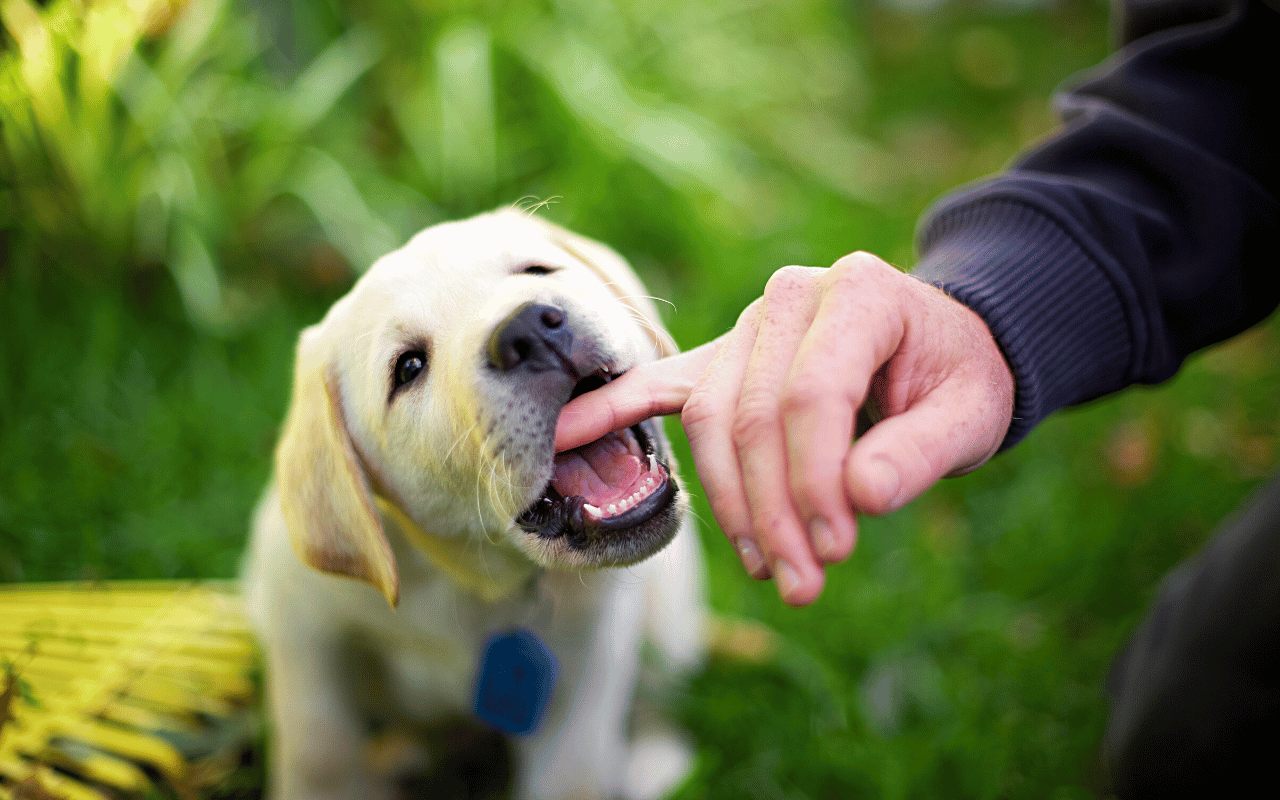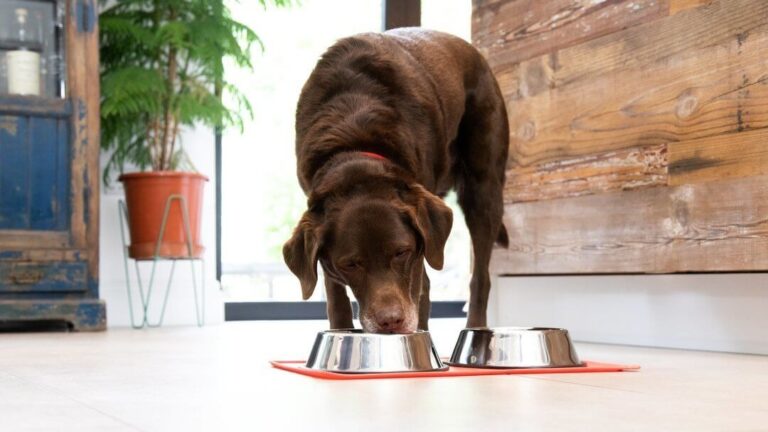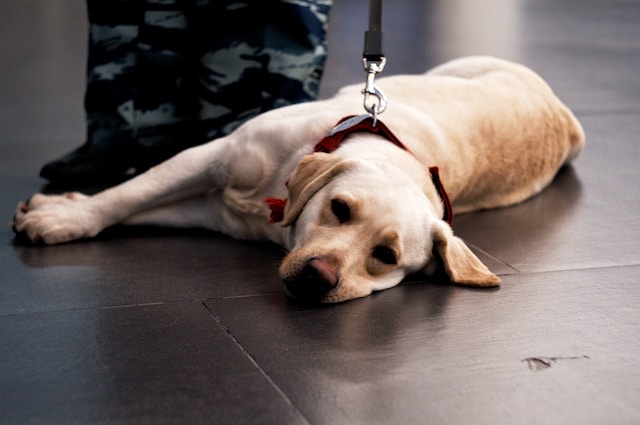Exploring the Suitability of Labrador Retrievers as Apartment Dogs
Are Labrador retrievers good apartment dogs? The Labrador Retriever is undoubtedly the most popular breed, according to the American Kennel Club. The breed has everything desired. This is why I picked one; probably, you are too. However, it is crucial to ensure that the moment and circumstances of your decision to buy this amazing breed will be appropriate. Over the years, I’ve seen how crucial it is from our own and our Lab’s perspectives.
For this reason, I wanted to discuss a crucial point about considering Labradors as apartment dogs. We enjoy how the Labrador retriever looks and wish to bring the dog along on our excursions. We know little about this breed but are curious to learn more. But it’s important to consider if they would make a decent apartment dog before choosing this breed. I decided to sit down and conduct some study on this subject. Continue reading to discover what I learned; perhaps it will be useful to others.
Labrador Retriever As Apartment Dog Companion
A popular canine breed, the Labrador Retriever, has roots in Newfoundland, Canada, not in an apartment. Originally, Labrador Retrievers were developed to be working dogs, especially for retrieving prey on hunting trips. Their trainability, intelligence, and adaptability have earned them a storied past and great value.
The origins of the Labrador dog may be traced to Newfoundland fishermen in the early 19th century. By recovering fish that escaped from fishing nets, bringing ropes, and towing tiny boats, they employed these canines to help them in their labor. The canines were ideal for these jobs because of their webbed paws, waterproof coats, and natural swimming abilities.
Labradors were introduced to England in the early 1800s when the British elite liked them. They were further developed and carefully bred for their friendliness and retrieving skills. The American Kennel Club (AKC) and The Kennel Club (UK) formally recognized the breed in 1917 and 1903, respectively.
Labradors maintained their superior working abilities throughout the 20th century, especially when recovering waterfowl during hunting seasons. They were also used as therapy dogs, service dogs for the disabled, and search and rescue dogs.
Due to their sweetness, loyalty, and flexibility, Labrador Retrievers have become very popular as family pets. They are generally recognized for having outgoing, friendly dispositions, making them good roommates for apartments.
Although Labrador Retrievers often adapt well to apartment life, each dog is unique, so their requirements may differ. When determining whether to bring a Labrador Retriever into an apartment, it’s crucial to consider aspects like exercise needs, temperament, and general lifestyle compatibility.
Tips for Keeping a Labrador Retriever in An Apartment
As promised, the following are a few items you could find useful if you’re wondering if you can maintain a Labrador Retriever in an apartment.
🐶Train Properly
There will undoubtedly be blunders or slip-ups while owning a pet—even the most well-mannered Labrador puppy. You may discard one or two pairs of shoes due to their constant chewing. Training your Lab appropriately is a good strategy to reduce potential future harm. For instance, toilet training them very early in life will greatly aid in saving time for cleaning later on.
Ensure you have a designated indoor toilet spot that your dog is familiar with if you don’t have a backyard and can’t easily reach any outside facilities (for example, if you live on a high level). The scent is one drawback of an indoor restroom. Thus, it is preferable to address it as soon as feasible. If your Lab is already an adult or even if they are still pups, crate training is a fantastic technique to teach them. It will undoubtedly come in very handy for you in the future.
🐶Optimize The Living Space
Ensure that your flat is set up or organized to keep your dog secure. For instance, be careful not to leave too many chewable items in plain sight where your dog may easily steal them. Additionally, you want to arrange your furniture to provide room for movement.
However, your Lab shouldn’t be roaming the halls of your residence. It is beneficial if they move around the area without feeling crowded or running into too many objects.
🐶Make Sure Dogs Are Allowed in Your Apartment.
The significance of this one cannot be emphasized enough. First, it would be best to consider that not all housing regions permit dogs inside the units. The no-pets clause in your lease is often stated in plain sight and not in small print. So double verify that before you Are Labs good apartment dogs? It’s important to confirm whether or not dogs are permitted within the complex by speaking with your landlord. Doing this right now will save you from experiencing a lot of disappointment down the road.
🐶Give Time With Them.
Your pet values your attention greatly, so set out some time to play with or walk with them each day. Separation anxiety in your Lab will also be lessened by regular exercise & quality time. This research found that dogs with the right amount of exercise were less likely to have separation anxiety or other worries.
🐶Give Them Toys.
Purchasing interactive or cognitively challenging toys for your Lab is another method to combat boredom. After cooped up at home, these toys will work wonders to calm your Labrador’s restlessness or boredom. On the other hand, toys that interact are also a terrific method to develop their minds if you are limited on time & cannot choose to teach them new things.
Depending on your Labrador’s level, you have many options for toys. While some toys are straightforward, others are more intricate. Suppose the toy game is new to both you and your Lab. Choosing a toy that is designed especially for novices and isn’t excessively complicated is advisable.
Are Labrador Retrievers Good Apartment Dogs?
Under ideal circumstances, the Labrador retriever may make a great apartment dog. Although their size might give the impression that they wouldn’t fit well in an apartment, this might only sometimes be true. It may be more difficult for certain people and families due to their size and activity level, but it is still feasible.
The Labrador retriever is a breed of dog that requires a lot of mental and physical stimulation. This might be like backyard insect hunting or family trips with their devoted family. This shouldn’t be an issue if the owner or family is involved. After a long day of exploring, the owner and their canine buddy return to their nice apartment.
The Labrador retriever will likely need more physical space to exhaust itself within a tiny flat if the owner or family are sedentary and passive. This breed of dog will be the ideal companion for active future owners!
The Labrador retriever is a muscular and energetic dog breed that requires a lot of stimulation and activity since they were originally developed to be a companion & helper for fishing & other outdoor activities. They need extensive training since they are a little larger—weighing between 50 and 90 pounds—and must feel content and fulfilled. This circumstance is a result of their history as working and assistance dogs.
Considerations Before Bringing a Labrador Retriever Into an Apartment
To protect the health and happiness of the Labrador Retriever and the apartment residents, it is important to take great thought before bringing the dog into the building. Before buying a Labrador Retriever for an apartment, remember the following.
➣Labrador Retrievers Needs Exercise
The Labrador Retriever is a breed with a lot of energy. It is a canine that requires much exercise to maintain its physical and mental well-being. It’s critical to satisfy Labrador’s daily demand for exercise. Exercise regularly promotes a peaceful, well-mannered, and content Lab. He becomes restless, exhibits destructive chewing habits, and even tries to flee anytime he has the opportunity if he doesn’t get enough exercise.
Additionally, keep in mind that Labs is like eating. If they do not exercise enough, they have difficulties with becoming overweight. If you’re considering living in an apartment with a Labrador, carefully assess if you have the time and energy to satisfy his demands for physical exercise.
➣Puppy Exercise
A puppy doesn’t need an exercise regimen during the first three months. They get their daily physical exercise during their typical playtime, quickly making them weary.
They should exercise for 5 minutes every month once they become three months old for at least the first year. For instance, a dog of three months old needs no more than 15 minutes of activity every day, whereas one six-month-old needs 30 minutes.
➣Exercise Requirements for Adult and Elderly Labradors
A Labrador Retriever that is fully developed requires around one hour of exercise. Depending on each Labrador’s energy level, different activities may be required. For the Labs with less energy, 45 minutes a day of exercise is sufficient. Others, who have more energy, need an hour & a half to two hours daily.
Their urge for physical exercise tends to decline between 6 and 7. However, they should exercise often for their health and well-being. For Labradors, regular exercise is highly beneficial, but it is particularly crucial for older dogs.
➣Labradors Chewing Habits
When determining if a Labrador is an ideal dog for you, remember that you must deal with destructive chewing and that you will need to invest the time to manage it properly. Dogs often use even destructive chewing, especially in young canines and pups. Lab pups will inevitably chew, and they must chew.
A lot of chewing occurs, particularly while lab pups are teething. They may create a lot of worry and havoc in the early chewing months. They like chewing on whatever they can get their hands on. From clothing, shoes, or even our hands and feet, which may be quite painful because of its little, pointed teeth.
➣Take the Chewing to the Toys
One of the greatest methods to deal with chewing is to encourage chewing on toys designed for that purpose. Choose the chew toys that your dog could like wisely. Many toys are dull to Labradors and are simple for them to break. Toys ought to be appealing to dogs in some way. Typically, it is food for a Lab.
The Kong is the toy that is most often suggested for Labradors. Most dogs are unable to shred this durable rubber toy. The Kong is unique in that it includes a hollow middle that may be filled with treats or other foods your dog like. An excellent technique is to freeze the Mouth with the treats and food to make access to the food more difficult.
The dog is delighted and occupied with a frozen Kong for a very long time. Your dog may enjoy attempting to figure out how to remove the food from the Kong, which helps keep him cognitively occupied and diverts the chewing.
➣Labrador Shedding
Despite having short, silky hair, Labradors tend to shed a lot. However, the amount varies greatly from dog to dog. Although labs shed all year, it is more copious in the spring and fall. Regularly brushing the dog can help you control and lessen the shedding issues. Brushing him twice weekly and at least once a day during the shedding seasons is advised. Consider it before getting a Labrador if someone in the family has allergies or if cleaning dog hair from your apartment continually bothers you.
➣Labradors Training
Labradors are smart and simple to teach dogs. Being a clever dog might have its disadvantages. It is simple for kids to grow bored and discover methods to amuse themselves with damaging actions if their minds are not engaged. The greatest way to keep a Labrador intellectually active is via training.
They are simple to teach, but it takes time and persistence. Setting aside time each day for training, either within your apartment or in a quiet, secure area outdoors, is important. They are attentive dogs with a balanced temperament if they get the right training, particularly early on.
➣Potty Training
Potty training a dog—not just a Labrador—in an apartment is one of the trickiest aspects of pet care. We must consider the time and work that raising a Labrador puppy in an apartment needs, particularly in the first few months. For toilet training, puppies need more care and work than adult dogs. Even more strongly advised is to work from home during the first few weeks of training or take a few weeks off to focus only on training.
Puppies typically have around an hour of potty inability each month of age. A dog that is two months old can go two hours without going potty. As a result, potty training a puppy in an apartment necessitates frequent trips outdoors for the dog to waste himself. Using pee pads and grass pads is one possibility that may be considered. They aid in your puppy’s training while he can go longer stretches without going pee.
To complete potty training in an apartment, one must be persistent, patient, aware of the accidents’ likelihood, and prepared to deal with them.
➣Labradors Needs Attention
The Labrador breed of dogs is particularly social. Canines must interact with humans and other canines to maintain their mental well-being and physical activity. If left alone for an extended time, they may experience separation anxiety, sadness, or depression.
Puppies that are eight to ten weeks old need a lot of care. They find everything in their surroundings weird. Labs may get highly upset if left alone for an extended time. They must gradually adjust to spending more time alone.
The Labrador may not be the best dog for you if you work full-time and have to leave your dog home alone for extended periods. Labs may become highly loud and destructive when left alone for an extended time. But if you carefully prepare to keep him content while you are away from home, you can make it work.
On the one hand, you may ask a friend or a dog walker to take your dog for a walk in the middle of the day. This encourages him to move more and spend less time alone. While you are at work, you may also bring him to a dog care where he can interact and play with other canines. There are training programs even in some doggie daycares.
Here Are Some Factors for Apartment Living With Your Labrador
A Labrador Retriever may be just as content in a tiny space as a Terrier, even though keeping one in an apartment may seem a little stressful. Living in an apartment may be advantageous if you have the proper training and give your Lab the necessary care.
👍Labradors Need Space As Other Dogs
A Labrador does not need more room than any other dog breed, even though this may seem misleading. Compared to Labrador Retrievers, some smaller dogs spend more time running about and barking at residences. Labrador dogs are so devoted to their owners and love that their preferred places are at your feet or beside you.
Your Lab will be sitting right that follows you or potentially even on your feet if you are in the computer area working on a paper. Most Labradors want to be near their owners and will follow you from room to room once you go to your next location to be there.
👍Your Labrador Will Stay Calm if You Exercise Them
Whether your Labrador lives in a 5,000-square-foot house or a tiny apartment, you must provide them with exercise. They benefit from exercise in several ways, including how it helps them stay calm and maintains their health and ideal weight.
Depending on their age, Labrador Retrievers need varied amounts of exercise. Here is a recommendation to assist you in choosing how often you should work out your Lab.
0 to 3 Months – Labrador puppies do not need a rigorous exercise regimen in their first few months but require time spent playing and having fun outside. Your Labrador should constantly be kept active and playing so that they learn that mobility is both vital and enjoyable.
3 to 6 Months – When a Labrador puppy is between three and six months old, they need to spend more time outdoors. As a general guideline, take your dog outdoors for 5 minutes each month they have been alive. This might help you determine if you are frequently providing them with adequate outside activity. That is a general recommendation; if your puppy is particularly active, letting them out for extended lengths of time throughout the day might help them burn off extra energy.
Adult Labrador – When your Labrador retriever reaches adulthood, it’s crucial that you keep exercising your dog often. To maintain them healthy and tranquil, an adult Labrador needs to exercise for at least 45 minutes each day, but offering them close to two hours is preferable.
👍Spend Time Outside Near the Apartment
Make sure to take your Labrador for walks outside the apartment complex. Your Lab must recognize and comprehend that this is their place of residence and that they have a sense of belonging to the apartment complex.
Take your dog up and down the stairs to the flat so they can see where you live. Walk them around the block or outdoors to the playground. Teach your Labrador to interact with people who live nearby and not to leap. To help your Lab acclimate to new sights, noises, and people in the apartment, expose them to new things daily.
👍Meet the Neighbors
Always respect the people who live next to you in your apartment building. Make extra treks around your neighbors’ apartments if they like seeing your dog so your Lab can get to know them.
Reward your Lab for being friendly, particularly to your neighbors and young children, and avoid letting them be around individuals who are violent toward them. As soon as possible, teach your Lab to behave properly among your neighbors and stop barking while people are around.
👍Your Labrador Wants to Use Some Of Your Space
As discussed earlier, you must comprehend that your Labrador wants to be near you. Allow them and following you about your apartment while you look for the ideal position for them in any of the rooms. Explain to your Lab that, as long as they behave properly, the apartment is his home, and they are welcome to be in any room.
Frequently Asked Questions
Is a Labrador retriever suitable for any size apartment?
Yes, a Labrador retriever can become used to living in an apartment, but they may find it too crowded if it’s too tiny.
Can you leave Labrador retrievers alone?
How long can a labrador be left alone? You may leave an adult Labrador alone for up to 8 hours if you provide them with a safe and comfortable place. If not, you should make arrangements for a restroom break. Ideally, kids should have unfettered access to a bathroom space. Keep them indoors with access to food, drink, and engaging toys.
Are Labradors good for new owners?
Due to their friendliness, good attitude, ease of training, and compatibility with children and other animals, labradors are wonderful first-time dogs. They are also entertaining to be around, clever, dedicated, and loyal. They do, however, require a lot of activity and lose weight.
Are Labrador retrievers anxious when left alone?
It has been determined which dog breeds are most prone to display symptoms of separation anxiety, with Labrador Retrievers topping the list.
Final Thoughts
Dogs and apartment living are for everyone. Fortunately, the Labrador retriever’s easygoing attitude and demeanor make life simpler. They will be happy to cuddle up on a sofa wherever you are if you satisfy their need for fun and action and help them expend energy. You don’t have to give your Lab away just because you want to move into an apartment. With a little time and care, labs may become excellent apartment dogs. I hope that this information will help you be able to keep your Labrador retriever in an apartment.


